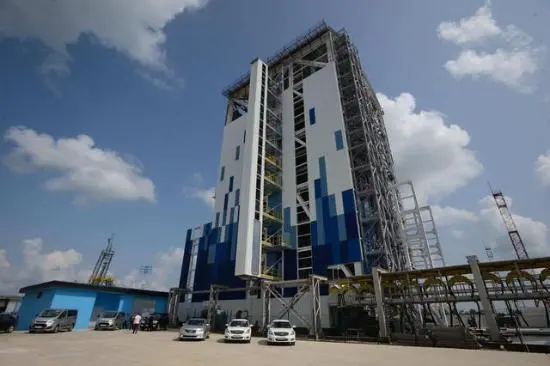Two teams of astronomers have used the Atacama Large Millimeter/submillimeter Array (ALMA) and the Atacama Pathfinder Experiment (APEX), in Chile, to observe dense concentrations of so-called “starburst” galaxies.
This montage shows three views of the distant group of interacting and merging galaxies called SPT2349-56. The left image is a wide view from the South Pole Telescope that reveals just a bright spot. The central view is from Atacama Pathfinder Experiment (APEX) that reveals more details. The right picture is from the Atacama Large Millimeter/submillimeter Array (ALMA) and reveals that the object is actually a group of 14 merging galaxies in the process of forming a galaxy cluster. (ESO/ALMA (ESO/NAOJ/NRAO)/Miller et al.)
With these galaxies packing together so closely, the scientific teams realized that they were getting ready to violently collide and merge with each other, which would eventually produce gigantic galaxy clusters.
One of the two teams was led by Tim Miller from Yale University.
Individual ALMA image of 14 galaxies forming a protocluster known as SPT2349-56. These galaxies are in the process of merging and will eventually form the core of a truly massive galaxy cluster. (ALMA (ESO/NAOJ/NRAO); B. Saxton (NRAO/AUI/NSF))
His team used ALMA to peer back some 12.42 billion years in time, or when the universe was only 1.4 billion years old, to watch the early stages of a massive cosmic pileup.
What Miller’s team found was a galaxy protocluster of 14 “starburst” galaxies named SPT2349-56.
Each of these individual “starburst” galaxies was found to be quite prolific and were spitting out stars some 1,000 times faster than the Milky Way in an area of space that is only three times the size of our home galaxy.
It’s thought that the forthcoming mammoth galaxy cluster could eventually become one of the biggest structures in the known universe.
Miller wondered how the observed grouping of galaxies was able to grow so fast was a mystery. “It wasn’t built up gradually over billions of years, as astronomers might expect,” he said in a press release from the National Radio Astronomy Observatory (NRAO).
Night Photo of a couple of ALMA atennae (Yuri Beletsky/ESO)
“This discovery provides an incredible opportunity to study how galaxy clusters and their massive galaxies came together in these extreme environments,” he added.
A study outlining the Miller team’s findings was published in the journal Nature.
Iván Oteo, who is with the European Southern Observatory (ESO), led the other team of astronomers in finding another megamerger similar to Miller’s.
The collection of 10 dusty “starburst” galaxies, discovered by his team, was given a nickname of a “dusty red core” because it was very red in color.
The galaxies in Oteo’s megamerger were first seen by the South Pole Telescope and the European Space Agency’s Herschel Space Observatory as dim blotches of light.
The Atacama Pathfinder Experiment (APEX) 12-m sub-millimeter telescope. (ESO/H.H.Heyer/Creative Commons Attribution 4.0 International License/Wikimedia)
The team then used ALMA and APEX to determine the merger’s odd structure and to confirm that its light began traveling through the universe about 1.5 billion years after the Big Bang.
“The lifetime of dusty starbursts is thought to be relatively short, because they consume their gas at an extraordinary rate, explained Oteo in a press release from the European Southern Observatory (ESO).
“At any time, in any corner of the Universe, these galaxies are usually in the minority. So, finding numerous dusty starbursts shining at the same time like this is very puzzling, and something that we still need to understand,” he added.
(VOA)
 简体中文
简体中文

